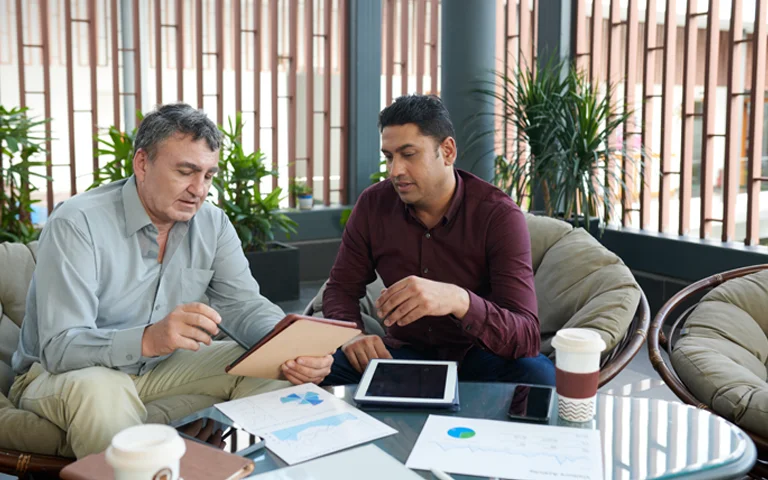
Introduction
Many experts predicted that account-based selling would be a fad, but the marketing approach actually turned out to be a very effective way to generate hyper-specific leads for your business. So, companies are hurrying to develop account-based marketing tactics to get the most suitable accounts.
According to Hubspot, 67% of brands have started using an account-based strategy as part of their overall lead generation efforts. The interesting thing is that almost two-thirds of these professionals say they’ve made more inbound requests via email as a result of this strategy.
Moreover, most B2B companies say that account-based practices have helped them develop better working relationships with their leads. Therefore, it only makes sense to look at how you can use account-based marketing tactics within your next B2B sales campaign.
Account-Based Marketing Best Practices to Rock Your B2B Sales
1. Build a Strong Target Account List

When you’re working on creating an account-based marketing tactic, the most important thing is to make sure you choose the right accounts.
You begin by taking an inventory of your current client base and then identify patterns of success. Companies that are similar to your current clients will be an ideal fit for future sales campaigns. You can also consider using account-based marketing services to look for companies that fit a certain profile, such as location and size.
One thing to keep in mind is accuracy is key. The more targeted your list is from the outset, the less work you will have to do down the line. Inaccurate account lists can be costly in terms of time and money. After all, you want to talk to the decision-makers in the companies when you’re reaching out to prospects.
Also, do not forget about existing clients as they have worked with you in the past and are happy with what you provide.
2. Pay Special Attention to High-Value Accounts
In account-based marketing, you invest more time and resources into a select group of highly valuable accounts instead of distributing your efforts across a wider audience.
To do this, you must become better acquainted with the accounts you want to target. You can then create personalized content, campaigns, and communications that address their specific goals and challenges. When you are able to tailor your offerings, your relevance among these key accounts is maximized.
3. Design Offers That will Land You Meetings with Your Prospects
As a marketer, it’s easy to fall into the trap of using the same old tactics to generate B2B sales leads. And while webinars and white papers can be effective, there are other ways you can engage with prospects that may not be part of your current strategy—such as designing offers.
Examples include free technology assessments or security audits. The goal of an offer is to get prospects to agree to a meeting with sales. Once they’re in front of sales, they are much more likely to convert into an opportunity.
4. Create Personalized Cold Email Campaigns
First, get yourself a good list of targeted companies that you want to do business with and develop a strategy for reaching out cold. Prepare an email that is both personalized and direct
- Tell the account company about yourself and your enterprise.
- State your purpose for contacting them.
- Provide an interest-gated offer of some kind.
Make sure you give them a way of responding without being intrusive—if they’re interested they’ll let you know. The reason why these account-based marketing tactics generally works as accounts prefer marketers or organizations who are not pushy.
5. Content Syndication Can Help You Warm Up Your Leads
Content syndication is a fantastic way to warm up your leads long before your sales teams engage them, and the best part is that it’s easy to implement. All you need to do is put your most meaningful and relevant content before your target leads. This could be anything from whitepapers and articles to ebooks or videos or even more customized content.
Let’s say you’re a B2B company selling security systems for network infrastructure. With content syndication, you could put together a guide that discusses what types of security breaches are happening now and how companies might be vulnerable to them.
By providing this information, you’ll be on the mind of your target lead when they’re ready to turn on their security system. Plus, they’ll already associate you with helpful resources, so it’ll make it easier for them to consider purchasing from you!
6. Use Intent Data to Find Potential Buyers
Finding the right people to target is one of the most important parts of a well-formed account-based marketing tactics. If you don’t have the right accounts, even a perfectly executed account-based marketing strategy won’t have a significant impact.
Enter intent data to get insights into the behavior of your most qualified prospects, enabling you to target them with tailored outreach.
For example, if you sell cloud storage solutions to small businesses, how do you use intent data to find companies with a need for such a solution? You might start by looking at all companies that are in the market for cloud-based solutions by looking at their overall consumption of content related to cloud computing. This can give you a long list of potential candidates.
But it’s not enough just to look at cloud computing in general. You also have to understand what types of cloud computing they’re interested in. From that perspective, you can see all companies whose employees have been consuming content about SaaS storage solutions, hybrid storage solutions or enterprise storage solutions, or whatever other criteria you think would be relevant.
7. Measure Your Account-Based Marketing Success
Let’s take a look at some of the metrics you should be tracking as part of your account-based marketing tactics:
- Revenue generated. This seems like an obvious metric, but it’s important to remember that ABM is about influencing revenue, not immediately generating it. You can’t expect a huge increase in revenue after one campaign — it will take time to show the needed results.
- Revenue per account(RPA). This measurement shows how effective your efforts are at converting target accounts into customers who pay for your products or services.
- Leads. If you’re doing a good job of targeting your prospects, you should see a significant increase in the number of high-quality leads that come through your funnel.
- Engagement Rate. Are you seeing an increase in engagement on your website? Is there more activity on your social media pages? Are people clicking through your emails? If they’re not engaging with your content, you may need to adjust your messaging or re-evaluate which accounts you’re targeting.
- Quality of new sales opportunities created. Not all sales opportunities are created equal; some have a better chance of converting than others. Are the leads generated by your account-based marketing strategy meeting or exceeding the quality of leads from other methods?
- Account engagement metrics: Account engagement can be measured in a number of ways, including the number of calls, email opens and clicks, video views, web visits, and downloads. You may also need to track the number of meetings scheduled with each account as well as the deal size for those meetings.
- Account win rates: This metric is fundamental because it shows how many deals are actually won from each account once they come into your pipeline.
Conclusion
There is no one-size-fits-all when considering account-based marketing tactics. Job titles and roles are going to vary and so should your approach to them. Create your ideal strategy that will work best for your organization and will get you the most accounts. Make sure you’re not just adding another task to the bottom of your to-do list, but that you’re taking the time needed to have a personal relationship with these key accounts.
Our blog
Latest blog posts
Tool and strategies modern teams need to help their companies grow.

Video has emerged as one of the most effective tools to cut through the noise and con...

The way B2B buyers research, engage, and decide has changed and so must the way marke...

Channel marketing helps B2B companies grow by partnering with third-party sellers. It...






